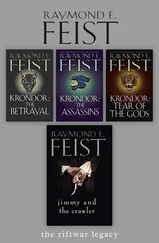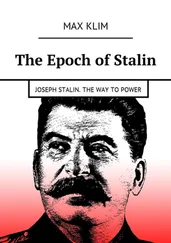It is notable that Zhdanov emphasised the basis of culture as an organic flowering from the nation. Of painting Zhdanov again attacked the psychotic ‘leftist’ influences:
Or take this example. An Academy of Fine Arts was organised not so long ago. Painting is your sister, one of the muses. At one time, as you know, bourgeois influences were very strong in painting. They cropped up time and again under the most ‘leftist’ flags, giving themselves such tags as futurism, cubism, modernism; ‘stagnant academism’ was ‘overthrown’, and novelty proclaimed. This novelty expressed itself in insane carryings on, as for instance, when a girl was depicted with one head on forty legs, with one eye turned towards us, and the other towards Arzamas. How did all this end? In the complete crash of the ‘new trend’. The Party fully restored the significance of the classical heritage of Repin, Briullov, Vereshchagin, Vasnetsov and Surikov. Did we do right in reinstating the treasures of classical painting, and routing the liquidators of painting? [72] Ibid., 12.
The extended discussion here on Russian culture under Stalin is due to the importance that the culture-war between the USSR and the USA took, having repercussions that were not only world-wide but lasting.
II
Stalinism and the Art of ‘Rootless Cosmopolitanism’
The contending outlooks of Stalinist Russia and the USA on the arts during the ‘cold war’ era have been referred to as the ‘Cultural Cold War’. The arts were◦– and remain◦– an important part of US subversion against the traditional cultures of the world in the US bid for a ‘new world order’. ‘Cultural imperialism’ is a primary means of imposing the ‘American dream’ over the world by breaking down the unique cultures of peoples and nations, to be replaced by the ‘American’ concepts of the ‘Global Shopping Mall’ and the ‘Global Factory’, with a uniform ‘world culture’, and world consumer market.
Stalinist Russia recognised the importance of the cultural question in maintaining its own cultural integrity and resisting American globalism. Stalinist Russia realised that nihilistic trends in the Left, including those within the USSR, were a corrupting influence, and worked in conjunction with America’s ‘Cultural Cold War’. As previously seen, Zhdanov had already launched an attack on corrupting trends in the arts, and sought to define a ‘Soviet culture’ that was rooted more in the folk-soul of Russia and of Europe, than in Marxist doctrine.
In 1949, the same year that America launched a decade’s long world offensive in the arts, Chernov returned to and developed Zhdanov’s theme, and termed cultural degeneracy ‘rootless cosmopolitanism’. The term is precise in describing the character of artistic nihilism. Rootless cosmopolitans produce their art as narcissists detached◦– rootless◦– from any cultural heritage. Here, as in foreign policy, anti-Stalinist Leftists, anarchists and Trotskyites converged with the American ‘Establishment’ against a common enemy: the USSR. Ironically, the USSR served as a bulwark of classical Russo-European culture, purged of Leftist doctrines, while the USA promoted cultural-Bolshevism and patronised sundry extreme Left artists and art theorists, and continues to promote ‘rootless cosmopolitanism’ in the arts as a strategy.
Abstract Expressionism: America’s ‘Official’ Art
Abstract Expressionism was the first specifically so-called ‘American’ art movement. Jackson Pollock, the central figure in Abstract Expressionism, was sponsored by the CIA’s Congress for Cultural Freedom. He had worked in the Federal Artist’s Project, 1938-42, along with other Leftist artists painting murals under Roosevelt’s New Deal regime. Abstract Expressionism became the primary artistic strategy of the Cold War offensive against the socialist realism sponsored by the USSR from the time of Stalin. As in much else, Stalin reversed the original Bolshevik tendencies in the arts that had been experimental and as one would expect from Marxism, anti-traditional. On the other hand, American Social Realism, which had been the popular American art form until the 1930s, was by the late 1940s displaced as art critics and wealthy patrons began to promote the Abstract Expressionists.
Many of the theorists, patrons and practitioners of Abstract Expressionism were Trotskyists or other types of anti-Stalinist Leftists, who were to become the most ardent Cold Warriors. Modernist art during the Cold War became a factor in the USA foreign policy. In 1947 the US State Department organised a modernist exhibition called ‘ Advancing American Art ’ which was intended for Europe and Latin America, reaching as far as Prague. [73] Frances Stonor Saunders, The Cultural Cold War: the CIA and the world of arts and letters (New York: The New Press, 1999), 256.
The Trotskyites had formed an alliance with the anarchists of the modernist movement on the basis of Trotskyite condemnation of Stalinist art policy. It was a cultural offensive that was to be taken on board by the CIA, the Rockefellers and other globalists and ‘rootless cosmopolitans’, to use the Stalinist phrase. In 1938 André Breton [74] Breton was the founding father of Surrealism. Joining the Communist Party in 1927 he was expelled in 1933 because of his association with Trotsky. Breton wrote of Surrealism in 1952: ‘It was in the black mirror of anarchism that surrealism first recognised itself’.
, Mexican communist muralist Diego Rivera [75] In Mexico Trotsky lived with Diego Rivera and then with Diego’s wife the artist Frida Kahlo, having reached Mexico in 1937, where he was assassinated by a Stalinist agent in 1940. It is of interest that Rivera was commissioned personally by John D Rockefeller Jr to paint the mural for the RCA lobby of the prestigious Rockefeller Center, which was being constructed in 1931 as a showplace for Rockefeller power. Abby, John D Rockefeller Jr’s wife, had bought Rivera’s paintings for her personal collection, had Rivera’s art exhibited at the Rockefeller controlled Museum of Modern Art, and had socialised with Rivera and Frida Kahlo. Nelson Rockefeller negotiated the commission with Rivera. The theme was to be: ‘Man at the Crossroads Looking with Hope and High Vision to the Choosing of a New and Better Future’. With such a theme it should be obvious as to how it would be interpreted by an enthusiastic communist, whose sketch depicted a falling capitalism with the bright future of fluttering red flags and a saintly visage of Lenin. Because of press ridicule over a capitalist subsiding a piece of revolutionary art, the mural was reluctantly dismantled. Ron Chernow, Titan: the Life of John D Rockefeller Sr (New York: Little Brown & Co., 1998), 669-670.
and Leon Trotsky issued a manifesto entitled: Towards a Free Revolutionary Art [76] Leon Trotsky, André Breton, Diego Rivera, Towards a Free Revolutionary Art, 25 July 1938.
. The manifesto was published in the Autumn 1938 issue of The Partisan Review , a Marxist magazine that was of significance in the Cold War. Trotsky, according to Bretton, had written the Manifesto, which states:
Insofar as it originates with an individual, insofar as it brings into play subjective talents to create something which brings about an objective enriching of culture, any philosophical, sociological, scientific or artistic discovery seems to be the fruit of a precious chance, that is to say, the manifestation, more or less spontaneous, of necessity… Specifically, we cannot remain indifferent to the intellectual conditions under which creative activity takes place, nor should we fail to pay all respect to those particular laws that govern intellectual creation.
Читать дальше












